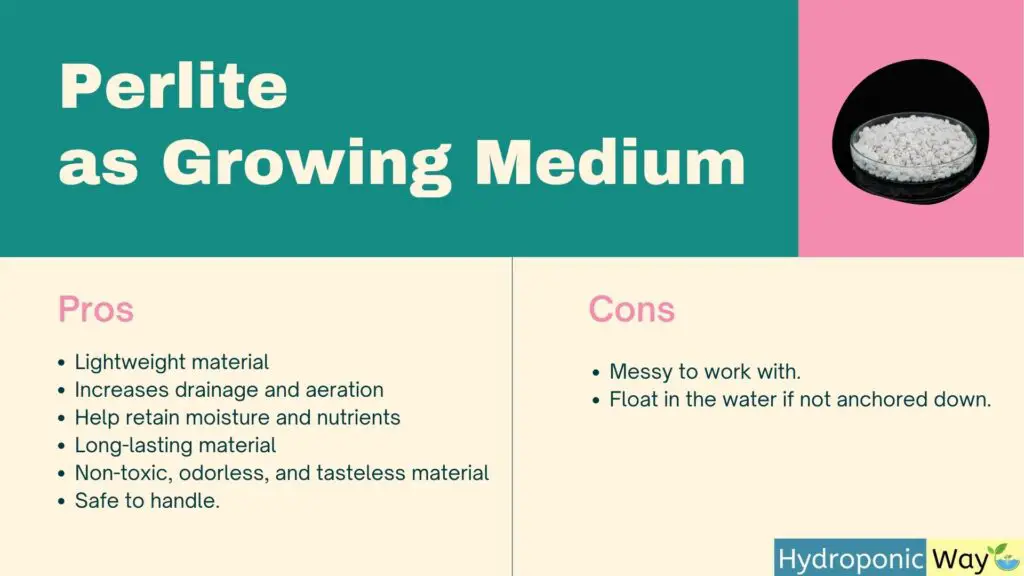How Much Perlite To Use In Hydroponic Garden?
Disclosure: Your purchases through our links may earn us a small commission, supporting our site’s ability to provide valuable information to our readers. Rest assured, it won’t impact your price. Thank you for your support.
Perlite is a naturally occurring mineral that has been used for thousands of years in agriculture and horticulture. It is a lightweight, non-toxic, odorless, and tasteless material that helps improve plant growth by increasing water retention and oxygenation.
Adding perlite to your garden can help improve plant growth, but it is important to know how much to use. The amount of perlite you should add depends on the type of plants you are growing, as well as the size.
How Does Perlite Help Plants Grow?
Perlite is a lightweight, volcanic rock that is heated to a high temperature until it pops like popcorn. This process creates small, white balls of perlite that are full of tiny pores.
When perlite is added to the growing medium, it increases drainage and aeration while also providing some insulation against extreme temperatures. Perlite can also help retain moisture and nutrients, making it an ideal addition to any garden.
Related: How Does Perlite Help Growing Plants? A Hydroponic Growing Medium for Your Garden
How Much Perlite Should I Use?
The amount of perlite you should use depends on the type of plants you are growing. For example, if you are growing plants that require a lot of water, you will need to use more perlite than if you are growing plants that require less water. Likewise, if you are growing vegetables, you will need to use more perlite than if you are growing flowers.
In general, a good rule of thumb is to use 2-4 inches of perlite for potted plants and 4-6 inches for outdoor plants. You can also mix perlite with other materials, such as vermiculite or coco coir, to create the perfect growing medium for your plants. So that the roots of your plants can benefit from increased oxygenation and water retention.
When adding perlite to your garden, be sure to mix it in well and water thoroughly. You can add perlite at any time, but it is best to add it before you plant your seeds or transplants.
Adding perlite to your garden is a great way to improve plant growth. Just be sure to use the right amount for your plants and mix it in well. With a little trial and error, you will soon find the perfect ratio of perlite to use in your garden.
How Do I Know if My Soil Needs More Perlite?
If your plants are not growing as well as you would like, it may be time to add more perlite to your garden. Perlite is relatively inexpensive and can be found at most garden centers or online retailers.
When adding perlite to your soil, be sure to mix it in well and water thoroughly. You should see an improvement in plant growth within a few weeks. If you do not, it may be necessary to add more perlite or amend your soil with another type of material.
How Long Does Perlite Last?
Perlite is a long-lasting material that you can use for many years. Once it is added to the soil, it will not break down or decompose. This makes perlite an ideal amendment for gardens and potted plants.
How Do I Clean Up Perlite?
Perlite is a non-toxic, odorless, and tasteless material that is safe to handle. If you get perlite on your hands or clothing, it can be easily removed with soap and water.
What Are the Pros and Cons of Using Perlite as a Hydroponic Growing Medium?
Pros of using Perlite as a hydroponic medium include:
- Perlite is a lightweight material that increases drainage and aeration in the growing medium.
- Perlite can also help retain moisture and nutrients, making it an ideal addition to any garden.
- Perlite is a long-lasting material that can be used for many years.
- Perlite is a non-toxic, odorless, and tasteless material that is safe to handle.
Cons of using Perlite as a hydroponic medium include:
- Perlite can be messy to work with.
- Perlite can float in the water if not anchored down.
If you are looking for a hydroponic growing medium that is lightweight and easy to use, Perlite is a good option. However, it is important to weigh the pros and cons before deciding if Perlite is suitable for your garden.
Related:
The Pros and Cons of Using Oasis Cube in Hydroponics
Rice Hulls vs Perlite as Hydroponic Growing Medium: Which is Better for Your Garden?
10 Characteristics of Ideal Hydroponic Growing Medium

Where Can I Buy Perlite?
Perlite can be found in many stores that sell gardening supplies and is also available online.
Click here this link to select the best perlite for your garden.
When purchasing perlite, be sure to get a high-quality product so that you can get the most benefits for your plants.
Bottom Line
Perlite is a great addition to any garden, and by following these guidelines, you can be sure that you are using the right amount to improve plant growth.
Now that you know how to use perlite in your garden be sure to add it to your soil and enjoy increased plant growth. Perlite is an essential component of any successful gardening strategy.
Thank you for reading
Also, read:
Hydroponic Sponge or Rockwool?
12 Surprising Uses for Rice Hulls You Never Knew About






